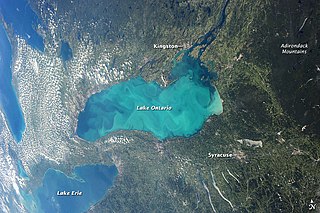
Magnesite is a mineral with the chemical formula MgCO
3. Iron, manganese, cobalt, and nickel may occur as admixtures, but only in small amounts.

Cholestane is a saturated tetracyclic triterpene. This 27-carbon biomarker is produced by diagenesis of cholesterol and is one of the most abundant biomarkers in the rock record. Presence of cholestane, its derivatives and related chemical compounds in environmental samples is commonly interpreted as an indicator of animal life and/or traces of O2, as animals are known for exclusively producing cholesterol, and thus has been used to draw evolutionary relationships between ancient organisms of unknown phylogenetic origin and modern metazoan taxa. Cholesterol is made in low abundance by other organisms (e.g., rhodophytes, land plants), but because these other organisms produce a variety of sterols it cannot be used as a conclusive indicator of any one taxon. It is often found in analysis of organic compounds in petroleum.

A carbon-to-nitrogen ratio is a ratio of the mass of carbon to the mass of nitrogen in organic residues. It can, amongst other things, be used in analysing sediments and soil including soil organic matter and soil amendments such as compost.
Donald Eugene Canfield is a geochemist and Professor of Ecology at the University of Southern Denmark known for his work on the evolution of Earth's atmosphere and oceans. The Canfield ocean, a sulfidic partially oxic ocean existing during the middle of the Proterozoic eon, is named after him.

The oceanic carbon cycle is composed of processes that exchange carbon between various pools within the ocean as well as between the atmosphere, Earth interior, and the seafloor. The carbon cycle is a result of many interacting forces across multiple time and space scales that circulates carbon around the planet, ensuring that carbon is available globally. The Oceanic carbon cycle is a central process to the global carbon cycle and contains both inorganic carbon and organic carbon. Part of the marine carbon cycle transforms carbon between non-living and living matter.

A whiting event is a phenomenon that occurs when a suspended cloud of fine-grained calcium carbonate precipitates in water bodies, typically during summer months, as a result of photosynthetic microbiological activity or sediment disturbance. The phenomenon gets its name from the white, chalky color it imbues to the water. These events have been shown to occur in temperate waters as well as tropical ones, and they can span for hundreds of meters. They can also occur in both marine and freshwater environments. The origin of whiting events is debated among the scientific community, and it is unclear if there is a single, specific cause. Generally, they are thought to result from either bottom sediment re-suspension or by increased activity of certain microscopic life such as phytoplankton. Because whiting events affect aquatic chemistry, physical properties, and carbon cycling, studying the mechanisms behind them holds scientific relevance in various ways.

Timothy Ian Eglinton is a professor of biogeoscience at the Geological Institute, ETH Zürich.
Robert Norman Clayton was a Canadian-American chemist and academic. He was the Enrico Fermi Distinguished Service Professor Emeritus of Chemistry at the University of Chicago. Clayton studied cosmochemistry and held a joint appointment in the university's geophysical sciences department. He was a member of the National Academy of Sciences and was named a fellow of several academic societies, including the Royal Society.

Okenane, the diagenetic end product of okenone, is a biomarker for Chromatiaceae, the purple sulfur bacteria. These anoxygenic phototrophs use light for energy and sulfide as their electron donor and sulfur source. Discovery of okenane in marine sediments implies a past euxinic environment, where water columns were anoxic and sulfidic. This is potentially tremendously important for reconstructing past oceanic conditions, but so far okenane has only been identified in one Paleoproterozoic rock sample from Northern Australia.

Photosynthesis converts carbon dioxide to carbohydrates via several metabolic pathways that provide energy to an organism and preferentially react with certain stable isotopes of carbon. The selective enrichment of one stable isotope over another creates distinct isotopic fractionations that can be measured and correlated among oxygenic phototrophs. The degree of carbon isotope fractionation is influenced by several factors, including the metabolism, anatomy, growth rate, and environmental conditions of the organism. Understanding these variations in carbon fractionation across species is useful for biogeochemical studies, including the reconstruction of paleoecology, plant evolution, and the characterization of food chains.

Microbial oxidation of sulfur is the oxidation of sulfur by microorganisms to build their structural components. The oxidation of inorganic compounds is the strategy primarily used by chemolithotrophic microorganisms to obtain energy to survive, grow and reproduce. Some inorganic forms of reduced sulfur, mainly sulfide (H2S/HS−) and elemental sulfur (S0), can be oxidized by chemolithotrophic sulfur-oxidizing prokaryotes, usually coupled to the reduction of oxygen (O2) or nitrate (NO3−). Anaerobic sulfur oxidizers include photolithoautotrophs that obtain their energy from sunlight, hydrogen from sulfide, and carbon from carbon dioxide (CO2).

24-Norcholestane, a steroid derivative, is used as a biomarker to constrain the source age of sediments and petroleum through the ratio between 24-norcholestane and 27-norcholestane, especially when used with other age diagnostic biomarkers, like oleanane. While the origins of this compound are still unknown, it is thought that they are derived from diatoms due to their identification in diatom rich sediments and environments. In addition, it was found that 24-norcholestane levels increased in correlation with diatom evolution. Another possible source of 24-norcholestane is from dinoflagellates, albeit to a much lower extent.
Sulfur isotope biogeochemistry is the study of the distribution of sulfur isotopes in biological and geological materials. In addition to its common isotope, 32S, sulfur has three rare stable isotopes: 34S, 36S, and 33S. The distribution of these isotopes in the environment is controlled by many biochemical and physical processes, including biological metabolisms, mineral formation processes, and atmospheric chemistry. Measuring the abundance of sulfur stable isotopes in natural materials, like bacterial cultures, minerals, or seawater, can reveal information about these processes both in the modern environment and over Earth history.

Lycopane (C40H82; 2,6,10,14,19,23,27,31-octamethyldotriacontane), a 40 carbon alkane isoprenoid, is a widely present biomarker that is often found in anoxic settings. It has been identified in anoxically deposited lacustrine sediments (such as the Messel formation and the Condor oil shale deposit). It has been found in sulfidic and anoxic hypersaline environments (such as the Sdom Formation). It has been widely identified in modern marine sediments, including the Peru upwelling zone, the Black Sea, and the Cariaco Trench. It has been found only rarely in crude oils.
Cindy Lee is a retired Distinguished Professor known for her research characterizing the compounds that comprise marine organic matter.
Margaret (Peggy) Delaney is marine geochemist known for her research on trace elements to examine changes in ocean chemistry over time.
Yan Zheng is a marine geochemist known for her research on metals in groundwater and private wells in Bangladesh, China, and the United States. She is an elected fellow of the Geological Society of America and the American Geophysical Union.
Elizabeth A. Canuel is a chemical oceanographer known for her work on organic carbon cycling in aquatic environments. She is the Chancellor Professor of Marine Science at the College of William & Mary and is an elected fellow of the Geochemical Society and the European Association of Geochemistry.
Maureen Hatcher Conte is biogeochemist known for her work using particles to define the long-term cycling of chemical compounds in seawater.
Elisabeth Lynn Sikes is an American geoscientist who is a professor at Rutgers University. Her research considers carbon cycling. She was awarded the 2022 Scientific Committee on Antarctic Research Medal for Excellence in Research.










